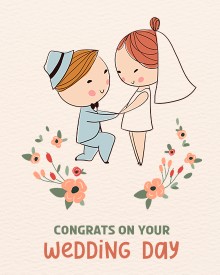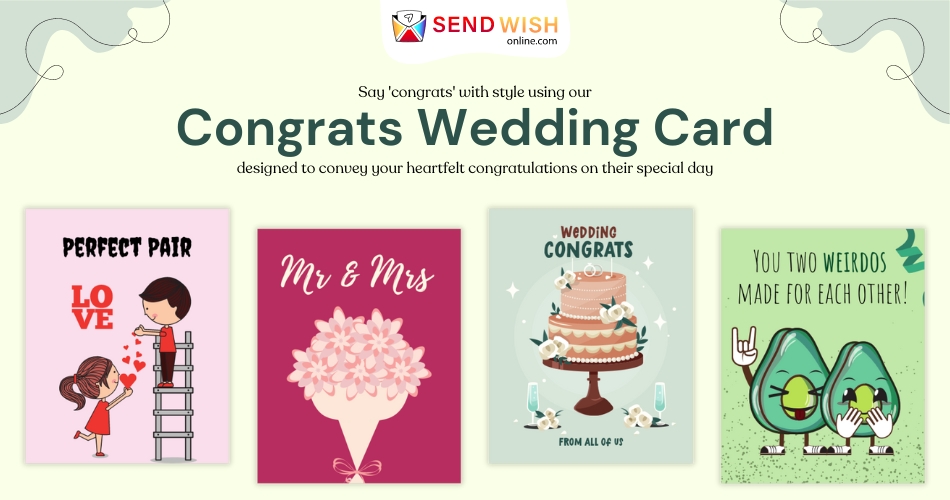Weddings are a beautiful celebration of love, commitment, and the promise of a shared future. In the whirlwind of planning the perfect day, every detail matters—from the venue to the flowers, the dress to the music. But amidst all these preparations, one item holds a special place: the wedding card. The wedding card is more than just an invitation; it is a keepsake that symbolizes the beginning of a couple’s lifelong journey together. Crafting the perfect wedding card is an art that requires careful consideration, creativity, and a deep understanding of the couple’s love story. This article will guide you through the process of creating the ideal wedding card, ensuring it captures the essence of the celebration and becomes a cherished memento for years to come.
1. Understanding the Importance of a Wedding Card
A wedding card serves multiple purposes, making it an essential element of any wedding:
- Invitation: At its core, the wedding card is an invitation, formally requesting the presence of family and friends to celebrate the union of two people.
- Keepsake: For many couples, the wedding card becomes a treasured keepsake, a tangible reminder of the day they exchanged vows.
- First Impression: The design and wording of the wedding card offer a first glimpse into the style and tone of the wedding, setting the stage for the event.
- Personal Expression: A wedding card reflects the personalities of the couple, their relationship, and their unique story.
Given these significant roles, it’s clear that creating the perfect wedding card is a task that deserves time, effort, and attention to detail.
2. Choosing the Right Style and Theme
The style and theme of the wedding card should align with the overall theme of the wedding. Whether the celebration is traditional, modern, rustic, or whimsical, the card should reflect this atmosphere. Here are some popular wedding card themes to consider:
2.1. Traditional Elegance
For a classic wedding, a traditional card design with elegant fonts, formal wording, and a timeless color palette such as white, cream, gold, or silver is ideal. Traditional wedding cards often feature embossed or foil-stamped details, intricate borders, and monograms.
2.2. Modern Minimalism
A modern wedding card focuses on simplicity and sophistication. Clean lines, minimalist fonts, and a monochromatic or neutral color scheme are hallmarks of this style. Less is more in modern designs, allowing the text and layout to make a statement without overwhelming details.
2.3. Rustic Charm
Rustic-themed weddings are all about natural beauty and a cozy, intimate atmosphere. Wedding cards for this theme might feature earthy tones, kraft paper, twine, and botanical illustrations. Handwritten fonts and watercolor elements can add a personal touch to the rustic charm.
2.4. Vintage Romance
For those inspired by the past, a vintage wedding greeting cards might include ornate details, lace patterns, and muted, antique-inspired colors. Think of old-world elegance with a touch of nostalgia. Vintage wedding cards often incorporate elements like sepia tones, floral motifs, and decorative frames.
2.5. Whimsical and Playful
Couples who want to infuse fun and personality into their wedding might opt for a whimsical card design. This could include bright colors, quirky illustrations, and playful fonts. Whimsical wedding cards are perfect for unconventional weddings, destination weddings, or couples who want to break away from tradition.
 3. Crafting the Perfect Wording
3. Crafting the Perfect Wording
The wording of a wedding cards is just as important as its design. It should convey the right tone, express gratitude, and provide all necessary details in a clear and elegant manner. Below are some key components of wedding card wording:
3.1. The Hosts
Traditionally, the hosts of the wedding—often the parents of the bride and groom—are mentioned at the beginning of the invitation. However, modern couples may choose to host the wedding themselves or include both sets of parents. Some wording examples include:
- “Mr. and Mrs. [Bride’s Parents] request the honor of your presence at the marriage of their daughter [Bride’s Name] to [Groom’s Name].”
- “Together with their families, [Bride’s Name] and [Groom’s Name] invite you to celebrate their union.”
- “With joy in our hearts, we, [Bride’s Name] and [Groom’s Name], invite you to share in our wedding celebration.”
3.2. The Invitation
The core of the wedding card is the invitation itself, which should be worded in a way that reflects the formality and style of the wedding wishes card. For a formal wedding:
- “We request the pleasure of your company at the wedding of [Bride’s Name] and [Groom’s Name].”
For a more casual wedding:
- “Please join us for the wedding of [Bride’s Name] and [Groom’s Name].”
3.3. Date and Time
Clearly state the date and time of the wedding ceremony. Spell out the numbers for a more formal invitation:
- “Saturday, the tenth of August, two thousand twenty-four, at four o’clock in the afternoon.”
For a less formal card:
- “Saturday, August 10th, 2024, at 4:00 p.m.”
3.4. Venue
Include the full address of the wedding venue. If the reception is at a different location, provide that information as well:
- “Ceremony to be held at [Venue Name], [Street Address], [City, State]. Reception to follow at [Reception Venue Name].”
3.5. Additional Information
Couples may choose to include additional information, such as dress code, wedding website, or RSVP details. This information can be included on a separate insert card or mentioned briefly in the main invitation.
- “Black tie attire requested.”
- “Kindly RSVP by July 20th at [Wedding Website URL].”
3.6. Gratitude and Closing
End the invitation with a note of gratitude or a heartfelt closing. This adds warmth to the card and leaves a lasting impression:
- “We look forward to celebrating with you.”
- “Thank you for sharing this special day with us.”
4. Selecting the Perfect Paper and Printing Techniques
The choice of paper and printing technique can significantly impact the overall look and feel of the wedding card. Here are some factors to consider:
4.1. Paper Type
- Cardstock: A popular choice for wedding invitations, cardstock is sturdy and offers a professional finish. It comes in various weights, with thicker cardstock giving a more luxurious feel.
- Cotton Paper: Made from 100% cotton, this paper is soft to the touch and exudes elegance. It’s often used for more formal wedding invitations.
- Recycled Paper: For eco-conscious couples, recycled paper is a great option. It has a natural, textured finish that works well with rustic or vintage designs.
- Vellum: A translucent paper that can be layered over the invitation for a delicate, ethereal look. Vellum is often used in combination with other paper types to add depth and interest.
4.2. Printing Techniques
- Letterpress: This traditional printing method involves pressing the design into the paper, creating a tactile, embossed effect. Letterpress is ideal for classic and elegant invitations.
- Foil Stamping: Foil stamping uses metallic foil to add shine and glamour to the invitation. Gold, silver, and rose gold are popular choices for this technique.
- Digital Printing: A cost-effective and versatile option, digital printing allows for full-color designs and is suitable for modern, minimalist, or whimsical invitations.
- Embossing/Debossing: Embossing raises the design on the paper, while debossing presses it into the paper. Both techniques add a tactile element to the card, enhancing its visual appeal.
5. Personalizing the Wedding Card
Personalization is key to making a wedding card truly special. Here are some ways to add a personal touch:
5.1. Incorporate a Monogram
A monogram of the couple’s initials can be a beautiful and meaningful addition to the wedding card. It can be used as a focal point on the card or subtly incorporated into the design as a decorative element.
5.2. Add a Personal Message
Including a short, handwritten message or a quote that holds significance to the couple can make the wedding card feel more intimate and personal.
5.3. Custom Illustrations or Photos
Consider adding custom illustrations that reflect the couple’s journey or a favorite memory. Alternatively, including a photo of the couple on the card can make it more personal and memorable.
5.4. Use Unique Shapes or Sizes
While traditional wedding cards are rectangular, using a unique shape or size can make the invitation stand out. Consider die-cut shapes like circles, hearts, or even custom shapes that match the wedding theme.


